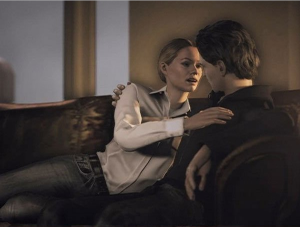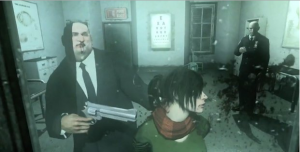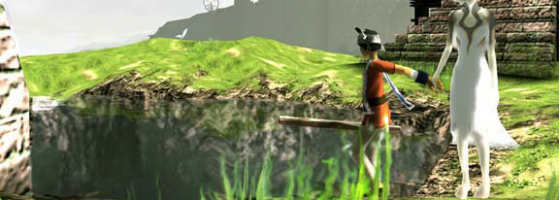Last week the 2nd part of the kickstarted video series — Tropes vs Women was published examining the trope: damsels in distress. Produced by the owner of Feminist Frequency — Anita Sarkessian, the series’ goal is to critically examine the tropes and stereotypes used against women in video game culture.
With each new video, debate and tempers flare from people condemning and condoning her series. I’ve watched some of her videos on TV tropes, but it was this latest video that I have some objections with, not with her message but how she is conveying it.
Critically Biased:
When Anita announced her kickstarter last year, she promoted that the tropes vs. women series would be a critically examined series with an aim to use it for informative and educational purposes.
However, her videos so far have been biased based on her viewpoints. Now that in of itself is not wrong by any means when you are producing content. But this contradicts the original purpose of her video series.
It’s important when analyzing something critically to remain unbiased, as that is the best way to examine a topic from all sides, not just your own. Yes, you can express your opinions on an issue during an examination, but in order to give a critical look you can’t have your bias permeate the entire piece.
All the more so when your intent is to produce content that could be used for educational purposes. In her recent video, Anita bases her examination on the viewpoint that the men in these games view the women as objects or trophies for them to win and designers insidiously and willingly made these designs.
But she made no attempt to even consider the prospect that some of these stories could be about a man trying to save the woman he loves. Instead she lumps games like Ico, The Darkness and Alan Wake, with titles like Ninja Gaiden, Duke Nukem Forever and Devil May Cry.

Alan Wake’s search for his wife was more then just looking for his property and took one game and two mini episodes to reach her.
This generalization leads to some major fallacies over context that we’ll be talking about next.
When your bias comes through in a piece it hurts the authenticity of your work.
And makes it appear more as propaganda instead of a critical examination; causing people to question the author, instead of debating the topics.
Contextual Sensationalism:
Watching her latest video there was one other element that annoyed me. Now, I haven’t played every game that she examined, but I did play a lot of them and there were some key elements she left out of her examination on several titles.This was done as sensationalism: showing images out of context to only promote her viewpoint.
There were three examples that I have to call into question which of course means —
SPOILER WARNING:
Alan Wake was used as an example of one of the many games that use the damsel in distress trope. A trope which Anita in this video and part one, explained the purpose was used to make the women as trophies or an object for the man to repossess.
However the context of Alan Wake shows the relationship of the two characters through flashbacks in the game, painting the picture of a couple with a rocky marriage. At the end of the game Alan doesn’t save his wife through machismo but through self sacrifice — saving her and condemning him to the darkness.
The second example was from Prey, here, Anita showed about 15 seconds of footage from the game. This consisted of the player finding the main character’s girlfriend attached to a monster and forced to fight her and it. The footage ended with the player taking out a sniper rifle, zooming in on her head and pulling the trigger.
Again, taken these 15 seconds out of context, this would be a game aimed at brutalizing women. However if we look at the entire game there was a different story. There were only three main characters in Prey — Tommy the main character, his grandfather and his girlfriend.
Within the first hour of play, the player found Tommy’s grandfather who was brutally killed in front of him by the alien army. Afterwards his grandfather became a spirit guide who helped him throughout the game.
The scene where you had to kill his girlfriend, you could use any weapon to do the task, using the sniper rifle in the most overt way possible was an extreme option that most players probably wouldn’t have picked for that moment. But even still, Prey was not about killing a woman, but wiping out a man’s only remaining family. Not only that, but like his grandfather, the girlfriend returns in the form of a spirit advisor to guide Tommy.
Lastly there was The Darkness, which she showed about 12 seconds of footage from both games. The main scene she used was when the main character — Jackie was forced to watch his girlfriend being executed by his uncle, a crime boss.
Anita once again showed this scene removed from the context of the game which painted Jackie and his girlfriend as a loving couple, which he described her as the best thing in his life and childhood friends. The developers even went as far as allowing you to watch them on a date night as they sat in each other’s arms watching a movie.
After she is killed, primarily by the fact that the Darkness creature within him wanted him to suffer and lose her, he doesn’t immediately go out for revenge. Instead he takes his gun and puts it in his mouth and pulls the trigger as he didn’t want to live without her.
END SPOILER
These three games were grouped together with her other examples as ways designers show women being brutalized as the forefront of the story or there for the sake of shock value. But using sensationalism to try and support her argument in my opinion undermines her original intent.
In Conclusion:
I support Anita’s intent and do believe that there is merit in critically examining the game industry in this way. But only showing a one-way interpretation and using sensationalism is not the way to do it.
She made some very good examples like Ninja Gaiden or Devil May Cry: Where the strong female characters were resigned as captives even though in cut-scenes they were the player’s equal. In another example with the SplatterHouse remake, this had the player finding pictures of the girlfriend in sexualized poses for no reason other than for titillation.

Jackie’s lost of his girlfriend in The Darkness was a very emotional scene, given the context surrounding the game.
Also her comment that there aren’t any major games where a woman must go out and avenge her husband or boyfriend was spot on. And she is right that we should have more games that buck the trend in that manner.
Funny enough, Anita trying to paint every game she presented as a clear example of her argument, she missed one of the best examples of the trope. BattleTank Global Assault for the Nintendo 64 had a plot where the majority of women died due to a virus.
This left the men in a post apocalyptic world battling over the remaining women. In multiplayer (and maybe the singleplayer) the objective was to capture the women from the other team to bring back to your base. This was a case where women were actually trophies used by men.
Context is an important detail and something that should not be ignored. It is what separates the mercy kill in Prey from Duke Nuken killing innocent women and then making wise crack remarks about it.
There is definitely a problem with the portrayal of characters in video games from both genders and examining the tropes of both genders together and individually is a worthy topic. But there is a difference between a critical assessment and one used to perpetrate a specific viewpoint using sensationalism.
And if someone like me can find the cracks in her argument, then the people who go out of their way to attack her should have no problem tearing apart the video and pushing back a meaningful discussion on the topic further.


